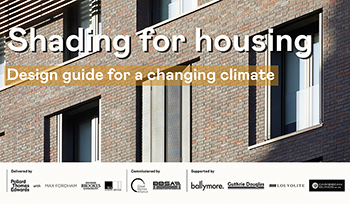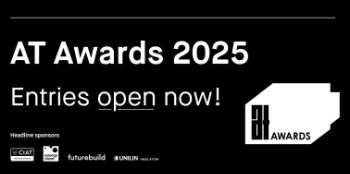How digital twins can help facilitate a better built environment

|
| Using data to make a ‘digital twin’ – software or systems that represent them – could make decision-making more efficient. Image credit: ODI |
[edit] Introduction
Pairing physical roads, bridges and buildings with a ‘digital twin’ – software or systems that represent them – could be the key to more efficient decision-making and better infrastructure performance.
The fourth industrial revolution – the term given to advances in powerful technology and the convergence of physical and digital realms – is increasingly helping engineers to make more informed decisions about how to deliver and manage infrastructure assets.
Key to this is the availability of accurate, real-time data about infrastructure condition and performance. But as technological capability increases, we have to be sure that this data is used in the best interests of end users, i.e. society.
We have a long way to go to perfect the ways that built environment data is accessed, used and shared, and to deliver full benefits to planning, performance, safety and national security. But one solution could be through using digital twins and the current initiative to create a 'national digital twin' of the UK’s infrastructure system.
[edit] What is a digital twin?
A digital twin is a digital representation of something physical, such as a building, a bridge or a stretch of motorway.
Driven by real-time data from the physical asset, the digital twin can be used to understand how a bridge would respond to loading and usage changes, or how traffic-flow patterns may impact motorway capacity. Crucially, the digital twin is more than just a model, as it enables positive interventions back into the physical twin.
Using these digital twins means we can better support the design, operation and maintenance of many aspects of our world, making it safer and more efficient.
The future vision for digital twins is that they can be combined together to create a ‘national digital twin’, which enables better decision-making at system and national level.
[edit] Creating a national digital twin
The national digital twin will not be a single digital twin of the whole built environment. Rather, it will be an ecosystem of individual digital twins connected via securely shared data.
Delivering this vision will need a wide variety of organisations across the public and private sector to work together to increase access to data while retaining trust. We will need to work together to understand how these principles can be applied, creating tools, guidance and training that will help to embed them across the sector.
The drive to make the national digital twin a reality is being led by the Digital Framework Task Group (DFTG), part of the Centre for Digital Built Britain (CDBB).
[edit] Creating principles for digital twins
The National Infrastructure Commission’s December 2017 report Data for the Public Good recognised that “data is infrastructure" and that there are increasingly strong connections between digital and physical infrastructure. The report also called for the DFTG to develop a digital framework that will help to unlock the value of infrastructure data and enable a national digital twin to be created.
The DFTG, which includes representation from a range of data stakeholder bodies including the Open Data Institute (ODI), has created a set of principles to underpin development of the framework and to guide the creation of digital twins.
Key to digital twinning is openness: open data, open culture, open standards and collaborative models that build trust, reduce cost and create more value. Data also needs to be secure and must deliver insight and maximum benefit to end-users of infrastructure. These values, plus useful definitions, are summarised in The Gemini Principles, published by the DFTG in December 2018.
The DFTG has also now published a roadmap for developing an information management framework and will soon launch a digital twin 'hub' to enable knowledge sharing about how to create and manage digital twins.
[edit] Data ownership or data stewardship?
The Gemini Principles echo the ODI’s own principles for strengthening data infrastructure, although they also talk about the need for clear ownership.
The ODI prefers to talk about the need for stewardship and rights over data, as it believes they are most likely to create an open, trustworthy data ecosystem, but agrees with the need for curation, governance and regulation to help deliver on the value of data.
[edit] Data infrastructure is as important as physical infrastructure
Infrastructure is the foundation on which our societies and economies function. Data has become a new form of infrastructure, underpinning better decision making across governments, organisations and communities. We need to continue to strengthen and maintain our data infrastructure, just like we do our roads, railways and health systems.
ODI is looking forward to continuing to work as part of the DFTG to deliver on this vision and help build a world where people, communities, organisations and governments use data to make decisions that improve people’s lives.
[edit] Get involved
Readers who would like to collaborate with the ODI on this research and development project or perhaps have an idea on how they might work with ODI to develop this or a similar new project can get in touch via this contact form.
[edit] Further information
- The National Digital Twin sounds exciting – but we need to do the hard stuff
- Defining the digital twin: 7 essential steps
- Data for the Public Good report
- The Gemini Principles
- Digital Twins for Building Flexibility into Power Plant Operations
- Digital infrastructure – unlocking the true value in civil engineering, webinar
- ICE Design Sprint: Managing data for the public good
--The Institution of Civil Engineers
[edit] About this article
This article was written by ice.org.uk Leigh Dodds and Peter Wells of the Open Data Institute. It was published on the website of the Institution of Civil Engineers in May 2019 and can be accessed here.
[edit] Related articles on Designing Buildings Wiki
- ICE articles on Designing Buildings Wiki.
- Artificial intelligence and civil engineering.
- Big data.
- Blockchain technology in the construction industry.
- Defining the digital twin: seven essential steps.
- Digital.
- Engineering Smart Cities.
- Internet of things.
- Making the most of big data.
- Open data.
- Smart technology.
- Virtual reality and big data disrupting digital construction.
Featured articles and news
Shading for housing, a design guide
A look back at embedding a new culture of shading.
The Architectural Technology Awards
The AT Awards 2025 are open for entries!
ECA Blueprint for Electrification
The 'mosaic of interconnected challenges' and how to deliver the UK’s Transition to Clean Power.
Grenfell Tower Principal Contractor Award notice
Tower repair and maintenance contractor announced as demolition contractor.
Passivhaus social homes benefit from heat pump service
Sixteen new homes designed and built to achieve Passivhaus constructed in Dumfries & Galloway.
CABE Publishes Results of 2025 Building Control Survey
Concern over lack of understanding of how roles have changed since the introduction of the BSA 2022.
British Architectural Sculpture 1851-1951
A rich heritage of decorative and figurative sculpture. Book review.
A programme to tackle the lack of diversity.
Independent Building Control review panel
Five members of the newly established, Grenfell Tower Inquiry recommended, panel appointed.
Welsh Recharging Electrical Skills Charter progresses
ECA progressing on the ‘asks’ of the Recharging Electrical Skills Charter at the Senedd in Wales.
A brief history from 1890s to 2020s.
CIOB and CORBON combine forces
To elevate professional standards in Nigeria’s construction industry.
Amendment to the GB Energy Bill welcomed by ECA
Move prevents nationally-owned energy company from investing in solar panels produced by modern slavery.
Gregor Harvie argues that AI is state-sanctioned theft of IP.
Experimental AI housing target help for councils
Experimental AI could help councils meet housing targets by digitising records.
BSRIA Occupant Wellbeing survey BOW
Occupant satisfaction and wellbeing tool inc. physical environment, indoor facilities, functionality and accessibility.























